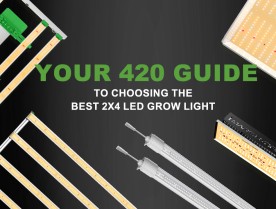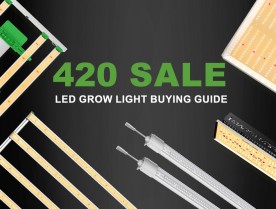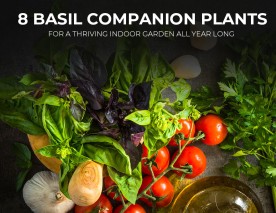
More growers are adopting the idea of starting young plants from seed for the right reasons. Aside from the excitement of getting it right, seed germination is a simple, effective, and cost-effective method of raising young plants.
This article discusses how to succeed at seed germination by avoiding the common mistakes growers make in the process. But before we get to that, let us look at how seed germination works.
What Are The Basic Requirements Of Seed Germination?
Seed germination is the sum of events that lead to the emergence of new young plants from seeds. The process involves the transition of healthy seeds into the early development of roots, shoots, and leaves. It starts with the rapid uptake of water by the seeds (imbibition), followed by the activation of enzymatic and respiratory activities. Then the seed proceeds to digest and translocate the stored food to the active growing area. The sugar, fatty acid, and amino acid are assimilated to facilitate cell division, enlargement, and differentiation, leading to the emergence of the seedling.
You can only germinate seeds successfully when the conditions are right. The essential external conditions necessary for seed germination include water, oxygen, temperature, and light or darkness. Water provides the hydration needed to activate activities in the protoplasm, helps in seed rupturing, and solubilizes food for effective translocation. Oxygen is a crucial source of energy needed for seed growth—it facilitates aerobic respiration of the seeds. A temperature of around 25-30°C (or 5-40°C in seeds with special needs) is required for growth. Light or darkness can serve as an environmental trigger for seed germination.
Seed dormancy is another factor affecting seed germination. In cases where it exists, it prevents the seeds from germinating even when the essential external conditions are met.
How do you succeed at seed germination?
This section outlines all you have to do to ensure you germinate seeds successfully as a grower. So, instead of trial and error, consider this practical blueprint to getting healthy seedlings out of seeds.
1. Disinfection is vital.
Our immediate environment contains tons of harmful microorganisms that may hinder germination. Except you are using brand new seed cell trays and flats, you should always disinfect your indoor seed starting equipment each time you reuse it. Disinfection prevents mold on seedlings and seed damping—caused by seedling blight, a soil-borne disease that attacks and kills seedlings. In most cases, you only need clean water and bleach to disinfect your starting equipment.

2. Read your seed packets.
Your seed packet is more than a nice envelope. It contains all you need to know about the seeds and how to germinate them successfully. Look out for information like the complete plant name, description—color, dimensions, pollinators attracted, bedding uses, and more, the production company, price, and weight. You may also find designations that suggest if the seed is certified organic, non-GMO, hybrid, or open-pollinated, planting depth, shade/sun requirements, days to germination, pre-planting prep, harvest, soil/moisture, and others.

3. Use a soil mix made for seed starting.
There are soil mixes made specially to germinate seeds. Unlike potting soil, seed starting soil mix has finder particles that allow easy root growth and extended moistness. A regular soil mix for seed starting usually contains different proportions of screened compost, perlite, vermiculite, and rehydrated coir. You can buy a pre-made seed starting mix or make one yourself. The latter can be cheaper and ensures you know exactly what is in your mix.
4. Light is necessary.
Some plant species germinate in absolute darkness; others germinate in both dark and light conditions. Light serves as an external trigger for the germination process in some seeds. Without light, these plants will not sprout. However, after successful germination, the initial sprout of every seed requires light as its energy source. Growers turn to various light sources to meet this requirement. LED grow lights are more efficient and effective in providing quality light to germinate seeds and support the initial sprouts. If you are in the market for high-quality,full-spectrum LED grow lights with low heat output and high energy efficiency, check out the options available at Mars Hydro.

5. Water is required for fertilization.
Water plays a crucial role in the fertilization of seeds. The embryo only bursts open after absorbing sufficient water from the environment. The root tip from the embryo also takes up water from the soil by going deeper into the soil, especially during the very hot months. This way, the seed and germinating embryo can access enough water to grow properly.

6 Common seed germination mistakes to avoid
In addition to adopting the above measures, avoiding these mistakes will ensure your seed germination process is hitch-free.
1. Using poor-quality seeds.
It is essential to ensure your seeds are viable and of high quality before planting. Otherwise, your seeds might struggle to germinate or not germinate at all. Most growers rely on seed banks to source their seeds. While this is not bad, it is also true that plant seeds lose their viability over time, especially when stored in normal room-temperature conditions. Go for healthy, viable seeds to ensure maximum germination rate.
2. Using unsafe containers and planting materials.
Another seed germination mistake growers make is not sterilizing their planting materials, allowing mold and fungal infections to hinder germination. The seeds may not germinate or sprout but then rot at the base. If you are reusing plastic containers, ensure they are properly sanitized.
3. Planting in deficient soils.
Soil is a crucial component of starting seeds. Soil can only effectively support seed germination when it contains all the essential nutrients and biology. As convenient as filling your seed trays with soil from your backyard is, that singular act may prevent your seeds from sprouting or leaving you with weak seedlings. Instead, go for light, well-aerated soil with excellent drainage.
4. Insufficient or excessive water.
We have established the importance of moisture to seed germination. However, overwatering or underwatering your seeds will not get you the desired results. An overly moist environment causes damping off and fungal diseases, while a dry environment causes wilting or poor germination. For best results, maintain a consistent watering schedule where the soil’s top layer dries before you water.
5. Planting at the wrong depth.
You will struggle to germinate seeds if you plant them too deep or too shallow. The fruit shape and size differences mean they have various spacing and depth specifications. You can find your seeds' proper spacing, aeration, and depth requirements on the seed packet. And that is another reason you should read them before anything else.
6. Not providing optimal temperature.
Getting good seed germination depends on the temperature of your soil. You do not need too low or too high temperatures to achieve optimal germination, even when you use tray germination. Seeds may go into dormancy if the temperature drops too low or spikes to over 100 for long.
7. Using a fertilizer.
Seeds do not need fertilizer to germinate. Newly-sprout seeds can go a few weeks living on the stored nutrients. You should only consider using fertilizers after two sets of true leaves are visible. It is also best to start with a quarter dose of balanced liquid feed and increase the amount gradually with time.
To Wrap Things Up…
A grower must put in the work to create optimal environmental conditions that allow new plants to emerge from their seeds, shell, or husk. This is one area where most growers struggle. The delicate nature of seed germination means a single wrong move can prevent you from getting results.
Follow the tips in this article to germinate your seeds successfully and avoid our outlined mistakes.
Good luck.





